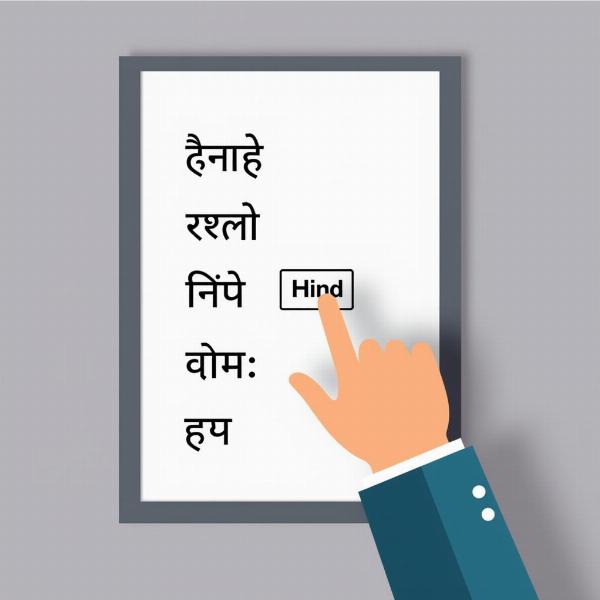Understanding the meaning of “all the time” in Hindi can be tricky, as a direct translation doesn’t always capture the nuance of the phrase. It’s a common English expression used to convey frequency or duration, and knowing its various Hindi equivalents can greatly enhance your communication. This article explores the different ways to express “all the time” in Hindi, providing context and examples to help you choose the most appropriate translation for any situation.
Different Ways to Say “All The Time” in Hindi
Depending on the specific context, “all the time” can be translated into several Hindi phrases. Here are some of the most common and accurate translations:
-
हर समय (har samay): This is the most literal translation of “all the time” and is generally suitable for most situations. It emphasizes the continuous nature of the action or state being described. For example, “He works hard har samay” translates to “He works hard all the time.”
-
सदैव (sadaiv): This word implies a more permanent or unchanging state. It’s often used in formal contexts or when referring to something that is always true. For example, “God is sadaiv with us” means “God is with us all the time.”
-
लगातार (lagatar): This word highlights the continuous and uninterrupted nature of something. It’s best used when referring to actions or events that happen without a break. For example, “The rain has been falling lagatatar for three days” translates to “The rain has been falling all the time for three days.”
-
हमेशा (hamesha): Similar to sadaiv, hamesha also emphasizes constancy and is often used to describe habits or characteristics. For example, “She is hamesha cheerful” means “She is cheerful all the time.”
-
बार-बार (baar-baar): This phrase translates to “repeatedly” or “again and again.” While not a direct equivalent of “all the time,” it can be used in contexts where the emphasis is on the frequent repetition of an action. For example, “He keeps calling me baar-baar” can imply “He’s calling me all the time.”
Choosing the Right Translation
The best translation for “all the time” depends on the specific context. Consider the following examples:
-
“I think about you all the time”: Here, har samay or hamesha would be appropriate, conveying a constant feeling or thought.
-
“The machine is running all the time”: In this case, lagatar might be the best choice, as it emphasizes the continuous operation of the machine.
-
“He complains all the time”: Here, baar-baar could be used to highlight the frequent repetition of the complaining.
 Selecting the appropriate Hindi translation for "all the time"
Selecting the appropriate Hindi translation for "all the time"
Understanding Nuances and Context
As with any translation, understanding the nuances of the original phrase and the target language is crucial. Using the wrong translation can sometimes alter the intended meaning. Therefore, paying attention to the context and choosing the most appropriate Hindi equivalent will ensure clear and effective communication.
What does “all the time” mean in everyday Hindi conversations?
In everyday conversations, har samay and hamesha are the most frequently used translations for “all the time.”
How do I use “all the time” in a formal Hindi setting?
In formal settings, sadaiv is a more suitable choice, conveying a sense of permanence and respect.
Can I use baar-baar to mean “all the time”?
While baar-baar emphasizes repetition, it can sometimes imply “all the time” if the context suggests continuous repetition.
Conclusion
Mastering the different ways to express “all the time” in Hindi will significantly improve your ability to communicate effectively. By understanding the nuances of each translation, you can choose the most appropriate phrase for any situation, ensuring your message is clear, accurate, and culturally sensitive. Remember to consider the context, the intended meaning, and the level of formality required.
FAQ
-
What is the most common Hindi translation for “all the time”? Har samay is the most common and literal translation.
-
Which word emphasizes the continuous and uninterrupted nature of something? Lagatar highlights the continuous aspect.
-
What is a formal way to say “all the time” in Hindi? Sadaiv is a more formal and respectful option.
-
Can “all the time” be translated as “repeatedly” in Hindi? Yes, baar-baar (repeatedly) can sometimes imply “all the time.”
-
Why is understanding context important when translating “all the time”? Context helps determine the most appropriate and accurate Hindi equivalent.
-
Which words emphasize a permanent or unchanging state? Sadaiv and hamesha both convey a sense of permanence.
-
What is the difference between har samay and hamesha? While both mean “all the time,” hamesha often implies a more habitual or characteristic state.
Meaning-Hindi.in is your one-stop solution for all your Hindi translation needs. We offer a wide range of professional translation services, including business and commercial document translation, certified and legal document translation, technical and user manual translation, website and localization translation, educational and academic document translation, and express translation services. Our expertise covers various specialized fields, ensuring accurate and culturally sensitive translations. Contact us today for a free quote! Email: [email protected], Phone: +91 11-4502-7584. Meaning-Hindi.in is committed to delivering high-quality translations that bridge language barriers and facilitate effective communication.